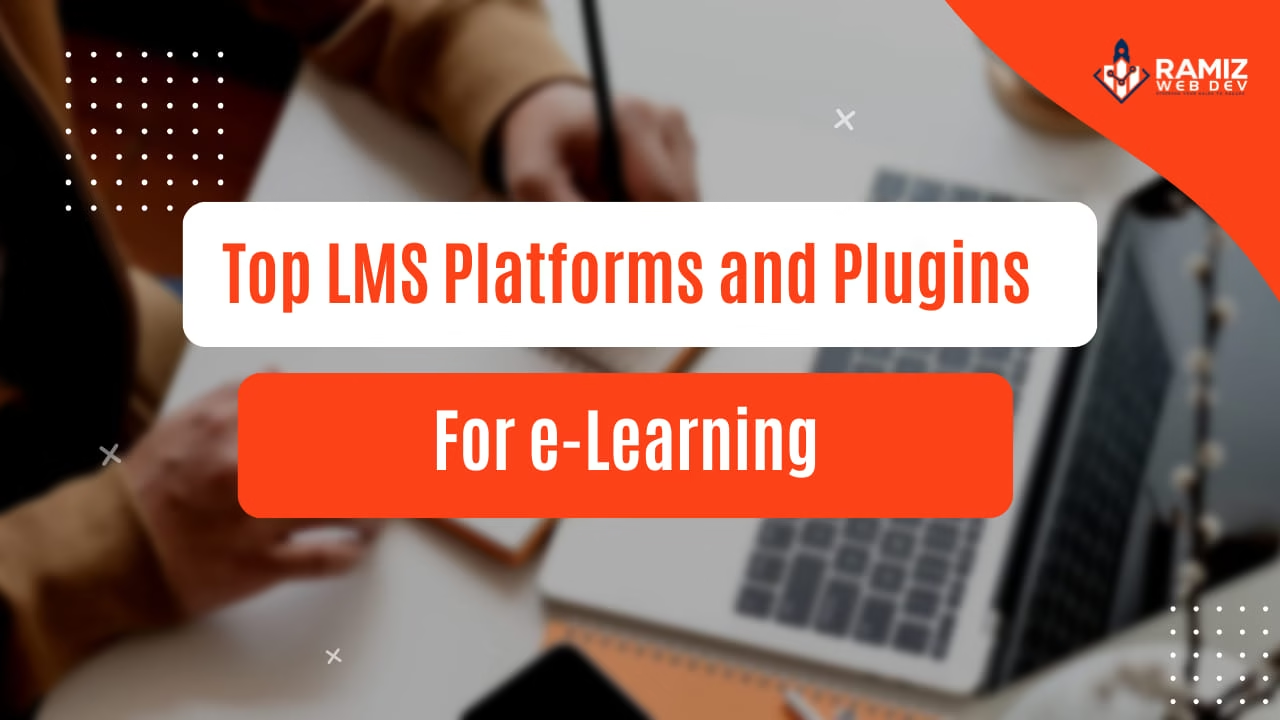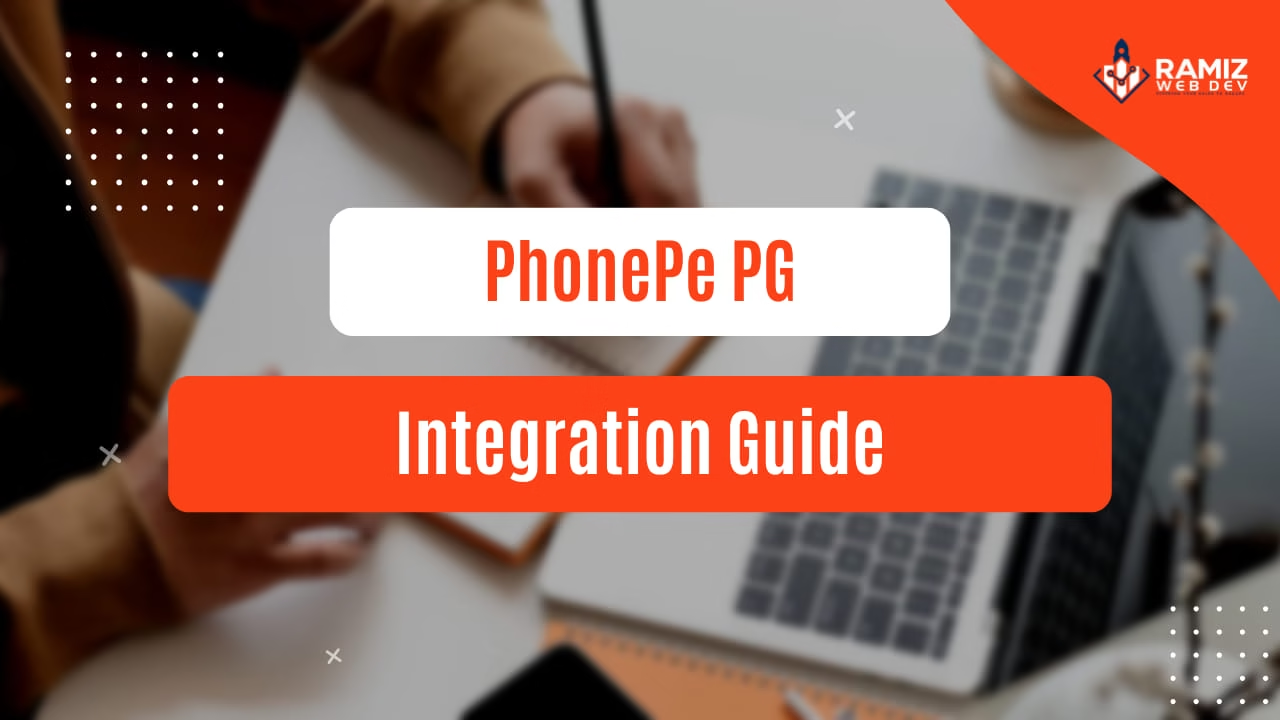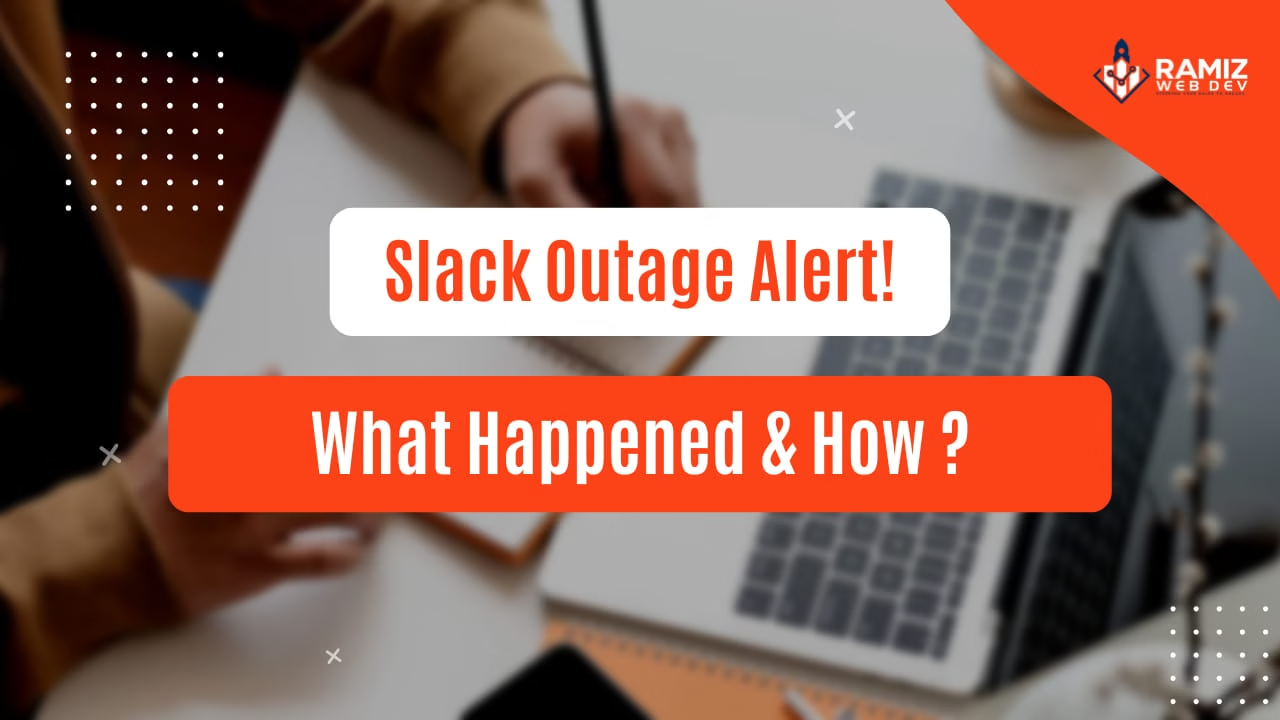In today’s digital-first world, Learning Management Systems (LMS) have emerged as transformative tools, enabling organizations to deliver engaging educational experiences. Whether you’re an educator, business owner, or learner, finding the right LMS platform is essential for success.
What is an LMS? Understanding the Basics
A Learning Management System (LMS) is software designed to create, deliver, and manage educational content. From academic institutions to corporate training programs, LMS platforms have reshaped how knowledge is shared globally.
LMS platforms often integrate with website development and offer support for mobile app, enabling users to access learning resources seamlessly on both web and mobile devices. This ensures a more flexible and accessible learning experience for students and employees alike.
Key Benefits of Using an LMS
- Centralized Learning Resources: All course materials are accessible in one location.
- Enhanced Engagement: Features like quizzes, videos, and gamification boost interactivity.
- Scalability: Suitable for both small teams and large organizations.
- Performance Tracking: Detailed analytics provide insights into learner progress.
How to Choose the Best LMS Platform for Your Needs?
When selecting an LMS, prioritize your organization’s specific requirements. Do you need robust analytics, or is scalability your top concern?
Features to Look for in a Learning Management System
- User-friendly interface.
- Mobile compatibility.
- Integration with existing tools (e.g., CRM, ERP).
- Customization and branding options.
Comparing Free vs. Paid LMS Platforms
Free platforms like Moodle LMS offer great functionality for smaller teams, while premium options like Docebo LMS provide advanced features for enterprises.
Top 5 LMS Platforms for Online Learning
1) Canvas LMS
Key Features
-
- User-friendly interface.
- Seamless integration with third-party tools like Zoom.
- Mobile-friendly design for on-the-go learning.
- Comprehensive grading system for educators.
Best Features
-
- Customizable dashboards.
- Robust analytics to track learner performance.
- Built-in multimedia tools for rich course content.
- Cloud-based architecture ensuring scalability.
Why It’s Great
Canvas LMS is popular in both academic and corporate settings due to its versatile features. Its integration options and intuitive navigation make it an ideal choice for institutions prioritizing ease of use.
Stats
-
- Customers: Over 30 million active users globally.
- Rating: 4.5/5 on G2.
- Price: Starting from $5 per user/month (institutional plans available).
2) Blackboard Learn
Key Features
-
- Comprehensive assessment tools.
- Accessibility features like screen readers.
- Modular architecture for flexibility.
- Mobile application for learners and administrators.
Best Features
-
- Virtual classroom integrations with Collaborate Ultra.
- Advanced reporting and analytics dashboards.
- Drag-and-drop content uploads for easy management.
- Strong emphasis on data security and privacy.
Why It’s Great
Blackboard Learn caters to universities and enterprises with its emphasis on accessibility and security. It’s ideal for institutions managing a diverse range of learners.
Stats
-
- Customers: Trusted by 17,000+ organizations worldwide.
- Rating: 4.2/5 on TrustRadius.
- Price: Custom pricing based on institutional needs.
3) D2L Brightspace
Key Features
-
- Personalized learning paths for students.
- Support for multimedia content like AR/VR.
- Automatic notifications for deadlines and updates.
- Comprehensive API support for integrations.
Best Features
-
- Built-in gamification to boost learner engagement.
- Adaptive learning powered by AI algorithms.
- Multi-language support for global audiences.
- Custom branding options for institutions.
Why It’s Great
D2L Brightspace excels in providing innovative learning experiences, making it a top choice for institutions looking to stand out.
Stats
-
- Customers: Serving over 15 million learners worldwide.
- Rating: 4.6/5 on Capterra.
- Price: Starting at $6 per user/month.
4) Moodle LMS
Key Features
-
- Open-source and fully customizable.
- Supports over 120 languages.
- Large community of developers and contributors.
- Integration with popular tools like Microsoft Teams.
Best Features
-
- SCORM compliance for content compatibility.
- Extensive library of plugins and add-ons.
- Regular updates to enhance security and features.
- Gamified quizzes and certifications.
Why It’s Great
Moodle LMS offers unparalleled flexibility and control, making it perfect for tech-savvy users and organizations on a budget.
Stats
-
- Customers: Used by over 300 million learners worldwide.
- Rating: 4.3/5 on Software Advice.
- Price: Free (hosted plans start at $120/year).
5) Teachable LMS
Key Features
-
- All-in-one platform for course creation, marketing, and sales.
- Integrated payment processing with support for multiple currencies.
- Detailed analytics to track student progress and course performance.
- Customizable website themes for branding.
Best Features
-
- Support for unlimited courses and students (on higher plans).
- Built-in tools for upselling and affiliate marketing.
- Seamless integration with popular tools like Zapier, Mailchimp, and Google Analytics.
- Video hosting included at no extra cost.
Why It’s Great
Teachable LMS is ideal for entrepreneurs and educators looking to monetize their expertise. Its simplicity, combined with powerful marketing tools, makes it stand out among other LMS platforms.
Stats
-
- Customers: Over 100,000 course creators worldwide.
- Rating: 4.4/5 on G2.
- Price: Starts at $39/month (Basic Plan) with a 5% transaction fee; Pro Plan at $119/month with no transaction fees.
5 Best LMS Software for Businesses and Enterprises
1) SAP Litmos
Key Features
-
- Automated learning workflows.
- Built-in eCommerce support for course monetization.
- Integration with CRM tools like Salesforce.
- Advanced reporting and analytics dashboards.
Best Features
-
- Offline mode for learners.
- Customizable learning paths for employees.
- Real-time feedback tools.
- AI-driven insights for managers.
Why It’s Great
SAP Litmos streamlines employee training with automation and reporting, making it a go-to for enterprise-level organizations.
Stats
-
- Customers: Over 22 million users across 130 countries.
- Rating: 4.5/5 on G2.
- Price: Starts at $6/user/month.
2) Docebo LMS
Key Features
-
- AI-powered learning recommendations.
- Social learning through forums and peer collaboration.
- White-labeling options for branding.
- Support for over 30 languages.
Best Features
-
- Extended enterprise capabilities.
- SCORM and Tin Can API compliance.
- Virtual coaching powered by AI.
- Seamless integration with HR platforms.
Why It’s Great
Docebo’s AI-driven features make it an innovative platform for businesses aiming to deliver personalized training at scale.
Stats
-
- Customers: Trusted by 3,000+ companies globally.
- Rating: 4.6/5 on Capterra.
- Price: Starts at $29/user/month.
3) Bridge LMS
Key Features
-
- Focused on employee development and performance management.
- Built-in tools for employee surveys and engagement tracking.
- Customizable training paths and learning programs.
- Integration with tools like Slack, Microsoft Teams, and Salesforce.
Best Features
-
- Manager dashboards to track team progress in real-time.
- One-on-one coaching tools for personalized training.
- Mobile-friendly design for on-the-go learning.
- Automated notifications for assignment reminders.
Why It’s Great
Bridge LMS is perfect for organizations that prioritize employee engagement and development. Its focus on blending learning with performance management tools makes it a unique option for businesses.
Stats
-
- Customers: Over 1,500 companies globally.
- Rating: 4.2/5 on Capterra.
- Price: Custom pricing based on company size and requirements.
4) Workday LMS
Key Features
-
- Seamlessly integrates with Workday’s suite of HR and finance tools.
- AI-driven recommendations for personalized learning.
- Support for video-based learning and live training sessions.
- Advanced analytics for skills tracking and certification management.
Best Features
-
- Mobile compatibility with offline access for learners.
- Built-in compliance tracking for regulated industries.
- Automated reporting for leadership teams.
- Scalability to support global enterprises with multilingual features.
Why It’s Great
Workday LMS is designed for large enterprises that require deep integration with their HR systems. Its robust analytics and compliance features make it especially useful for industries like healthcare and finance.
Stats
-
- Customers: Used by Fortune 500 companies and global enterprises.
- Rating: 4.3/5 on TrustRadius.
- Price: Custom pricing based on company requirements.
5) TalentLMS
Key Features
-
- Intuitive interface designed for small to mid-sized businesses.
- Supports over 30 languages for global teams.
- Built-in content creation tools, including quizzes and videos.
- Integration with tools like Zoom, Slack, and Salesforce.
Best Features
-
- Gamification elements such as badges and leaderboards to boost engagement.
- Multi-tenant support for managing training across departments or clients.
- Offline learning capabilities for remote employees.
- Extensive reporting and analytics to measure training impact.
Why It’s Great
TalentLMS strikes a balance between simplicity and functionality, making it a top choice for businesses that need quick implementation without compromising on features. It’s particularly effective for training distributed teams.
Stats
-
- Customers: Trusted by over 70,000 organizations worldwide.
- Rating: 4.6/5 on Capterra.
- Price: Starts at $69/month for up to 40 users (Free plan available with limited features).
Best WordPress LMS Plugins to Build eLearning Websites
1) LearnPress – WordPress LMS Plugin
Key Features
-
- Drag-and-drop course builder.
- Support for quizzes, lessons, and assignments.
- Integration with popular payment gateways.
- Compatibility with WordPress themes like Eduma.
Best Features
-
- Multi-instructor support.
- Comprehensive course analytics.
- Easy backup and restore options.
- Wide range of free and paid add-ons.
Why It’s Great
LearnPress is perfect for beginners and educators looking for a free, feature-packed solution to build online courses.
Stats
-
- Downloads: Over 100,000+ active installations.
- Rating: 4.2/5 on WordPress.org.
- Price: Free (premium add-ons start at $19.99).
2) Tutor LMS
Key Features
-
- Intuitive drag-and-drop interface.
- Certificates and badges for course completion.
- Email notifications for course updates.
- Built-in monetization tools.
Best Features
-
- Content drip for timed course releases.
- Advanced quiz builder with multiple question types.
- Multi-instructor feature for collaborative course creation.
- Mobile responsiveness for a seamless experience.
Why It’s Great
Tutor LMS combines ease of use with professional-grade features, making it a top pick for educational websites.
Stats
-
- Downloads: 70,000+ active installations.
- Rating: 4.5/5 on WordPress.org.
- Price: Free (Pro version starts at $149/year).
3) Sensei LMS
Key Features
-
- Seamless WooCommerce integration.
- Support for multimedia content in lessons.
- Progress tracking for students.
- Built-in quiz creation tools.
Best Features
-
- Modular design for scalability.
- Automatic grading for quizzes.
- Responsive design for mobile and tablet users.
- Gamification options like certificates.
Why It’s Great
Developed by Automattic, Sensei LMS is ideal for WooCommerce-powered eLearning platforms.
Stats
-
- Downloads: Over 40,000 active installations.
- Rating: 4.1/5 on WordPress.org.
- Price: Starts at $149/year.
4) LearnDash
Key Features
-
- Advanced course creation tools with a focus on quizzes, lessons, and drip-feeding content.
- Detailed reporting and analytics to track learner progress.
- Integration with WooCommerce for selling courses online.
- Support for gamification with badges and certificates.
Best Features
-
- Dynamic content delivery with prerequisites for advanced learning paths.
- Gradebook functionality to evaluate student performance.
- Course points system to increase engagement.
- Seamless compatibility with various WordPress themes.
Why It’s Great
LearnDash is widely regarded as one of the most robust WordPress LMS plugins. Its enterprise-level features make it an excellent choice for educational institutions and businesses.
Stats
-
- Downloads: Over 40,000 active installations.
- Rating: 4.5/5 on WordPress.org.
- Price: Starts at $199/year for a single site license.
5) Masteriyo LMS
Key Features
-
- Intuitive course builder with a focus on simplicity and speed.
- Built-in live classroom support for real-time learning.
- Custom quiz builder with various question types.
- Integration with PayPal and Stripe for payments.
Best Features
-
- Ajax-based course loading for improved site performance.
- User-friendly course progress tracker for learners.
- Content restriction options for premium courses.
- Compatibility with major WordPress page builders like Elementor.
Why It’s Great
Masteriyo LMS is perfect for beginners and educators who want a lightweight yet powerful plugin for creating and selling courses. Its real-time classroom feature is a standout.
Stats
-
- Downloads: Over 10,000 active installations.
- Rating: 4.7/5 on WordPress.org.
- Price: Free (Pro version starts at $149/year).
6) LifterLMS
Key Features
-
- All-in-one solution for courses, memberships, and payment integration.
- Drag-and-drop course builder for easy customization.
- Engagement tools like gamification, quizzes, and certificates.
- Extensive library of add-ons for advanced functionality.
Best Features
-
- Support for recurring subscriptions and memberships.
- Affiliate program integration to promote courses.
- Integration with Mailchimp and ConvertKit for email marketing.
- Mobile-responsive design for seamless user experience.
Why It’s Great
LifterLMS is ideal for entrepreneurs and coaches looking to create membership sites alongside eLearning courses. Its extensive functionality and scalability are its biggest advantages.
Stats
-
- Downloads: Over 20,000 active installations.
- Rating: 4.5/5 on WordPress.org.
- Price: Free (Add-ons start at $120/year).
White-Label LMS Solutions for Enterprises
What is a White-Label LMS?
A white-label LMS is a platform that allows businesses to customize the software with their branding, logos, and themes. These platforms provide organizations with a unique, professional appearance, giving learners a seamless and branded experience.
Key Benefits of a White-Label LMS include
- Enhanced brand consistency.
- Flexibility to tailor the user interface to organizational needs.
- Better engagement with learners through a personalized learning environment.
Best White-Label LMS Platforms for Branding
- TalentLMS: Offers robust branding options, including custom URLs and themes.
- Docebo LMS: Allows deep customization for both design and functionality.
- Absorb LMS: Supports multi-tenant environments for large-scale enterprises.
- SAP Litmos: Provides extensive branding and white-labeling options for corporate use.
How LMS Platforms Enhance Corporate Training?
Streamlining Training Management Systems
An LMS simplifies corporate training by centralizing all resources into a single platform. This allows businesses to Create and assign courses efficiently, Automate compliance training and certifications, and Monitor employee progress through real-time analytics.
Integrating LMS with Existing Tools
Many LMS platforms integrate seamlessly with existing business tools like:
- HR Software: To sync employee records and performance data.
- CRM Platforms: For customer training and onboarding.
- Collaboration Tools: Such as Microsoft Teams or Slack for enhanced communication.
Integration ensures a cohesive experience and eliminates the need for redundant systems.
Free LMS Platforms: Are They Worth It?
Pros of Free LMS Platforms
- Cost-effective for small businesses and startups.
- Open-source platforms like Moodle offer high customizability.
- Many free LMS options include basic analytics and reporting tools.
Cons of Free LMS Platforms
- Limited features compared to paid versions.
- Less reliable customer support.
- May require technical expertise for setup and maintenance.
Top Free LMS Platforms
- Moodle LMS: A highly customizable open-source LMS.
- TalentLMS (Free Plan): Includes core features for up to 5 users.
- Chamilo: Lightweight LMS with a focus on usability.
- Open edX: Ideal for large-scale open courses.
LMS for Small Businesses: Top Picks and Features
Cost-Effective LMS Systems
Small businesses often prioritize affordability. Top cost-effective LMS options include:
- TalentLMS: Free for up to 5 users; affordable plans for small teams.
- LearnPress: A free WordPress plugin with add-ons available.
- Moodle LMS: Open-source and free with optional hosting plans.
Ease of Use for Small Teams
Small teams benefit from LMS platforms that offer Minimal setup time, Drag-and-drop course builders, Mobile-friendly interfaces for flexibility, and Platforms like Tutor LMS and LifterLMS are excellent for small teams due to their user-friendly design.
How to Use WordPress LMS Plugins to Create Online Courses?
Key Steps to Setting Up an LMS with LearnPress
- Install the LearnPress plugin from your WordPress dashboard.
- Use the drag-and-drop builder to create courses, lessons, and quizzes.
- Configure payment gateways for selling courses.
- Customize the course design using WordPress themes like Eduma.
Key Steps to Customizing Courses with Sensei LMS
Sensei LMS simplifies customization by:
- Integrating with WooCommerce to sell courses.
- Allowing multimedia content uploads for engaging lessons.
- Offering quiz creation tools for assessments.
- Supporting custom certificates to reward learners.
Future Trends in Learning Management Systems
AI and Machine Learning in LMS Platforms
Artificial intelligence is transforming LMS platforms by enabling Personalized learning paths tailored to individual needs, Automated course recommendations, AI-powered chatbots for 24/7 learner support, and Predictive analytics to identify knowledge gaps.
Gamification and Interactive Learning Experiences
Gamification is a growing trend that uses game-like elements to improve engagement. Key features include Badges, points, and leaderboards to motivate learners. Easy interactive simulations for real-world training. Moreover, AR/VR technologies mostly used to create immersive learning environments.
Summing Up: Choose the Best LMS Platform
Choosing the right Learning Management System (LMS) is essential for achieving your educational or corporate training goals. Whether you’re a small business looking for a cost-effective solution, an enterprise needing robust features, or an educator aiming to create engaging online courses, there’s an LMS tailored to your needs.
- For small businesses and startups, platforms like TalentLMS and LearnPress offer budget-friendly options with user-friendly interfaces.
- For enterprises, solutions like SAP Litmos, Docebo LMS, and Workday LMS provide advanced features, scalability, and integration capabilities to manage large-scale training programs.
If you’re a WordPress user, LearnDash, Tutor LMS, and LifterLMS are excellent plugins to transform your website into a full-fledged eLearning platform.
As trends like AI, gamification, and AR/VR continue to shape the LMS landscape, investing in a system that supports future growth and innovation is crucial. Take the time to evaluate your specific requirements, consider scalability, and opt for a platform that aligns with your long-term objectives.
The right LMS will not only streamline your learning and training processes but also empower learners to achieve better outcomes, fostering growth and success for your organization or educational institution.
FAQ’s
Q: What is a Learning Management System (LMS)?
A: An LMS is a software platform that facilitates the creation, delivery, and management of educational content. It is widely used by schools, businesses, and organizations to train employees, track learner progress, and manage online courses.
Q: What are the benefits of using an LMS for businesses?
A: LMS platforms streamline training processes by offering centralized content management, real-time tracking of employee performance, and cost-effective scalability. They also improve engagement through gamification and interactive learning tools.
Q: What is the difference between LMS and LCMS?
A: While an LMS focuses on delivering and tracking learning experiences, a Learning Content Management System (LCMS) is primarily designed for creating, storing, and managing course content. An LCMS is ideal for content developers, while LMS serves instructors and learners.
Q: Can an LMS be used for corporate training?
A: Yes, LMS platforms are widely used for corporate training. They help organizations manage onboarding, compliance training, skill development, and employee performance tracking with ease.
Q: Are free LMS platforms suitable for small businesses?
A: Free LMS platforms like Moodle or TalentLMS are excellent for small businesses with limited budgets. However, they may have restricted features compared to paid versions, such as limited scalability or customization options.
Q: How do I choose the best LMS for my organization?
A: To choose the best LMS, consider your organization’s goals, budget, and technical expertise. Look for features like scalability, user-friendliness, mobile compatibility, and integration with existing tools such as CRM or HR software.
Q: Which are the top WordPress LMS plugins?
A: The top WordPress LMS plugins include LearnDash, Tutor LMS, Sensei LMS, Masteriyo LMS, and LifterLMS. These plugins provide powerful tools to create, sell, and manage online courses on WordPress websites.
Q: What is a white-label LMS platform?
A: A white-label LMS platform allows businesses to customize the platform with their branding, logo, and unique design. These platforms are perfect for organizations that want to deliver a branded learning experience.
Q: Can an LMS support multilingual training?
A: Yes, many LMS platforms, like TalentLMS and Moodle, support multiple languages, making them suitable for global organizations or institutions with diverse learners.
Q: Can I integrate LMS with WooCommerce?
A: Yes, plugins like Sensei LMS allow seamless WooCommerce integration.
Q: Which LMS is best for enterprise-level training?
A: Platforms like SAP Litmos and Docebo LMS are excellent for enterprise needs.








